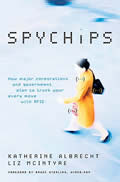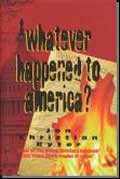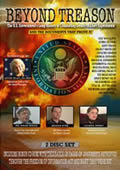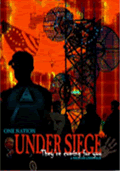ABUSE
OF FORCE
PART 3 of 3
By Jon Christian Ryter
July 10, 2008
NewsWithViews.com
Police records show that paramedics were called at 7:08 p.m. Fifteen minutes later her face turned blue. She was unresponsive. She was pronounced dead at the Southwest Florida Regional Medical Center shortly after 8 p.m. Her death certificate indicates she died from "excited delirium." Kicking over a cardboard display rack at a Hallmark Gold Crown store turned out to be a capital offense for Tracy Rene Shippy. At no time were the lives of the Lee County sheriff's deputies threatened by the handcuffed woman.
If you listen to law enforcement officials or their public relations spinmeisters they will assure you that stun guns are used only on violent offenders, or on those who threaten cops with physical violence. However, the reality doesn't match the rhetoric. The youngest person on record disabled by a stun gun was a 6-year old Miami boy who was threatening to cut himself with a piece of glass. In another incident with a minor child, a police officer was physically forced to chase down a 12-year old who was attempting to skip school. To teach her a lesson the cop, who chased her in a foot race, brought her to her knees with a stun gun. Once again, the 12-year old posed no threat to the police officer. He used the stun gun on her not to defuse a volatile, life-threatening situation, he did it because he was mad. Both incidents show an abuse of force. Both police officers should have been terminated.
A Rock Hill, South Carolina police officer used a stun gun to subdue a 75-year old woman whose only crime was becoming distraught when asked to leave a nursing home after getting upset because she couldn't find the room of a sick friend. In April, 2005 a Minnesota man died after local police shot him with a stun gun because he refused to stop shouting in the middle of the street. A Riviera Beach, California police officer used a stun gun on a derelict he found sleeping on a park bench. Awakened abruptly, the homeless man cursed at the officer and refused to let the cop search him for "contraband." The derelict died. Homelessness is now a capital offense in Riviera Beach. And, about the same time at the Houston County Jail in Georgia, a man died after being jolted three times with a stun gun. His crime? He refused to pay a $700 fine.
Pulse technology energy weapons (stun guns) are the most abused weapons used by America's local, county and State law enforcement agencies. It is time those agencies were held accountable for those abuses. As the rising death toll for the use of pulse technology affirms, stun guns do not represent the use of "non-lethal" force. Rather, as defined by the Milwaukee police department, stuns guns are merely "less-lethal" than firearms. Yet, they are used to subdue people for the most minor infractions of the law.
Let's suppose for a moment that the Minnesota man who died after being pulsed with a stun gun because he was standing in the middle of the street shouting at drivers and pedestrians, was shot with the officer's 9mm handgun. What would happen to the cop? He would have been charged with wrongful death. Today, he would be just another inmate in a correctional facility. Why should those who "accidentally" kill a citizen with a "less-lethal" weapon be excused? Because every State that uses pulse technology energy weapons (stun guns) defines their use as a non-lethal use of force, arguing that if they are used properly, stun guns are safe law enforcement tools, and when death occurs it's merely a freak accident.
Fifty-six year old, wheel chair-bound schizophrenic Emily Marie Delafield of Green Cove Springs, Florida would disagree that stun guns are safe if she was still alive. Police were called to settle a family spat on April 24, 2006. When Green Cove Springs police arrived, Delafield was holding a hammer and, according to the two officers, James Acres and Barbara Luedtke, a kitchen knife. They ordered her to drop her weapons. She refused. The police were in no danger from the 56-woman even though Luedtke said it appeared that Delafield was going to throw the knife at them. Delafield's medical problems severely limited her range of motion so, while she may have been able to raise her arm, it was unlikely she could have thrown the knife. Over the past couple of years police had been to her home a total of 28-times. Everyone in the Green Cove Springs police department knew, or knew of, Delafield. She lived with an oxygen tank which was attached to her motorized wheel chair. This alone should have told the officers she was "at risk," and being pulsed just one time could have had fatal consequences. Only Officer Luedtke, using the female officers "weapon of choice"—the gender equalizer—pulsed her nine times. Acre pulsed her once. Fifty thousand volts coursed through her body for 121 seconds. She died. The State of Florida ruled Delafield's death a homicide. The prosecutor decided it was a justified homicide because Delafield had two weapons. Regardless what the State's attorney said, Delafield's death was not justified since the officers should have had every expectation that pulsing her ten times for 121 seconds would result in her death. Three months after Delafield's death the medical examiner had still not issued a cause of death, or produced a death certificate for Emily Marie Delafield.
On June 7, 2005 47-year old Russell Walker died after being pulsed three times by Las Vegas police. Police were summoned to a local hotel around 8 p.m. where Walker was causing a disturbance. Officers pulsed him with a stun gun when he resisted their attempt to handcuff him. After he was handcuffed, Walker began struggling again. Again, they stunned him. Still struggling he was shocked a third time. He stopped breathing. He was pronounced dead at a local hospital at 9 p.m. There is no way Vegas police were threatened with "deadly force" from Walker since two of the three jolts he received from the stun gun came after he was handcuffed. Walker continued to struggle only because police were using unnecessary force to restrain him. The coroner ruled that Walker died from a heart arrhythmia during restraint procedure." In reality, Walker died because police used deadly force where it should not have been an option since Walker had already been restrained and, handcuffed, posed no threat to police.
Incidents like these, where handcuffed suspects are shot with stun guns, are becoming so numerous that it's impossible to keep track of them. In a tragic incident in Madera, California, police officer Marcie Noriega was one of nine officers who responded to a disturbance at an apartment complex on Oct. 27, 2002. Among those arrested was Madera Torres. Torres was handcuffed and placed in the back of a police vehicle where he tried to kick out the vehicle windows. In an attempt to subdue the handcuffed prisoner, Officer Noriega decided to use her "gender equalizer. " She mistakenly drew her 40-caliber Glock instead of her Taser. Noriega fired one slug into Torres' chest and killed him. The prosecutor declined to indict her. Because there was no "intent of criminal negligence" or "aggravation," he said he probably would not be able to get a conviction. Yet "civilians" whose "non-criminal intent" negligence in car accidents results in the death of others are not only charged with second or third degree manslaughter for the deaths they caused, they are almost always convicted.
Every day police officers all across the United States face growing danger while carrying out their duties. Over 18 thousand law enforcement officers have been killed in the line of duty in the United States since States began to keep a public record of those deaths. Two hundred-sixteen of them were women. Last year, the names of 145 peace officers were added to the roster of those who gave their lives in the line of duty. Being a police officer in an era of increasing lawlessness in America as druglords import armies of thugs to protect their turf is almost as dangerous as being a soldier or Marine in a war zone. The stress police officers face is unlike the stress 9-to-5er or factory shift workers face in their daily routine. They are forced to make split-second decisions that affect lives. Sometimes those decisions are wrong and people die. That was the case with Marcie Noriega and Madera Torres. Torres was drunk and belligerent. He paid for his stupidity with his life. The city of Madera and the State of California decided not to prosecute Noriega. They were wrong. The incident was a tragic accident. Noriega pulled the wrong trigger on the wrong weapon and a man who did not deserve to die for trying to kick out the side window on a police cruiser died.
Torres is dead because Noriega acted irresponsible. Had Noriega pulled her Taser and not her Glock and subdued the already handcuffed and subdued Torres with less than lethal force, she should have still faced charges for pulsing a handcuffed subject who was in custody and could not subject her or anyone else to physical injury.
Police officers are not granted the broad license to maim or kill subjects or suspects who are not attempting to use equivalent force against them. The US Commission on Civil Rights states that "...in diffusing situations, apprehending alleged criminals and protecting themselves and others, police officers are legally entitled to use all appropriate means, including force." First, appropriate force can be used to apprehend alleged criminals and/or to protect themselves and others from the threat posed by the subject, suspect or wrongdoer. Once the subject is apprehended, handcuffed and in custody, the law assumes that the threat to life and limb is abated. The use of what was, minutes before, appropriate force then becomes excessive, unreasonable, and not necessary to take custody of the alleged wrongdoer.
Left in the air during the act of apprehension is just how much force is "reasonable and necessary." Courts in different jurisdictions define "reasonable and necessary" differently, thus the broad yardstick in what is, or is not, allowed under the law is too elastic. Clearly, the unnecessary use of force is the application of force where there is no justification for its use. The excessive use of force is the application of more force than required when some force is needed. Pulsing a subject with a 50 thousand volt jolt whose only "crime" is not moving fast enough to suit a police officer is excessive force. In most jurisdictions in the United States, once a subject is subdued and handcuffed, he or she is no longer construed to pose a threat to the officer or to others. To jolt them with a stun gun after they are handcuffed and physically in custody is, by definition, the use of excessive force.
|
Subscribe to the NewsWithViews Daily News Alerts! |
Police officers who use excessive force, regardless how volatile the communities in which they live and work, must be prepared to face criminal charges for their conduct when they succumb to the use of excessive or abusive force, particularly when that abusive force causes the loss of life using law enforcement tools that are supposed to be "less than lethal." There should be a common sense rule in play for law enforcement agencies that says people most likely to suffer a sudden death cardiac event are those under the influence of either illegal drugs or legal prescription pharmaceuticals and therefore subject to cardiac arrest. And even more obviously at risk for sudden death cardiac events are those who are confined to a wheel chair, using oxygen, or who are just plain old and infirm. Also at extreme risk are children and adolescents. Common sense dictates that when groups at high risk for sudden death cardiac events are jolted with high voltage electrical charges death is very likely going to result. When police officers opt to use what has become the most convenient disabling devise regardless of the consequences, they need to be held accountable when at risk people die.
Click here for part -----> 1, 2, 3,
� 2008 Jon C. Ryter - All Rights Reserved
[Read "Whatever Happened to America?"]














